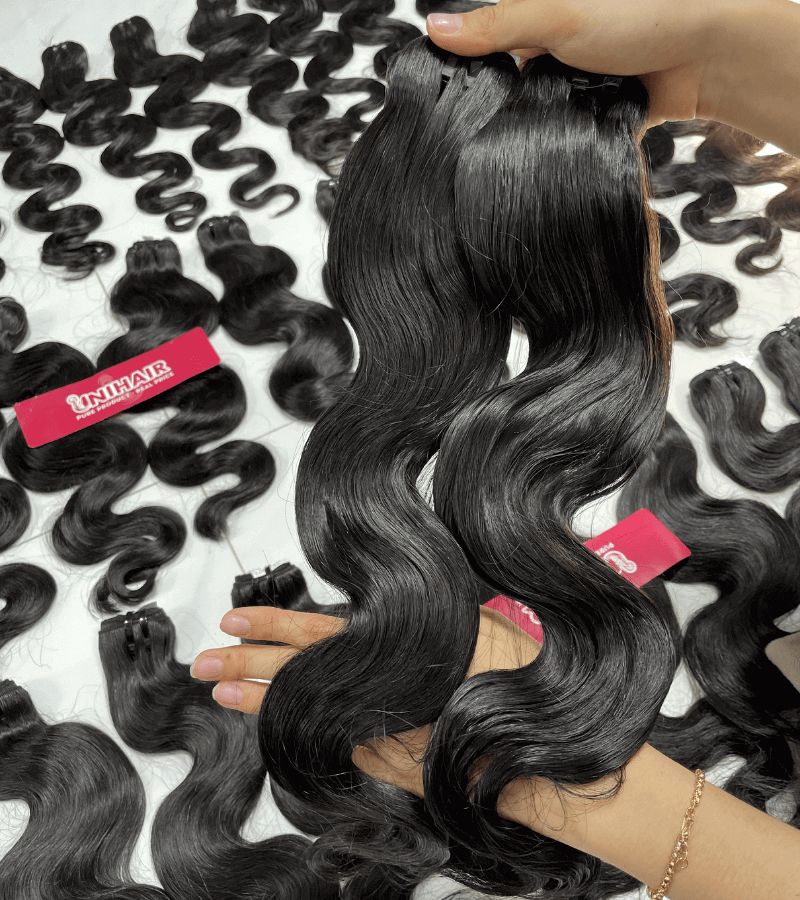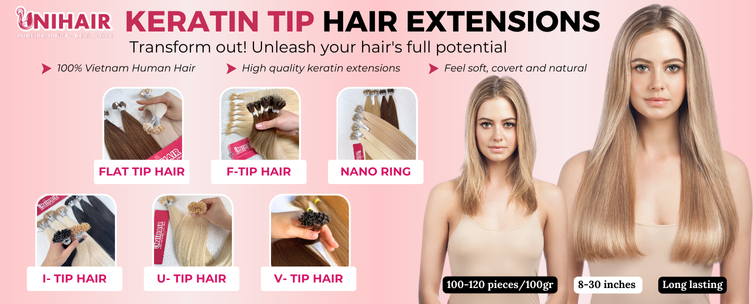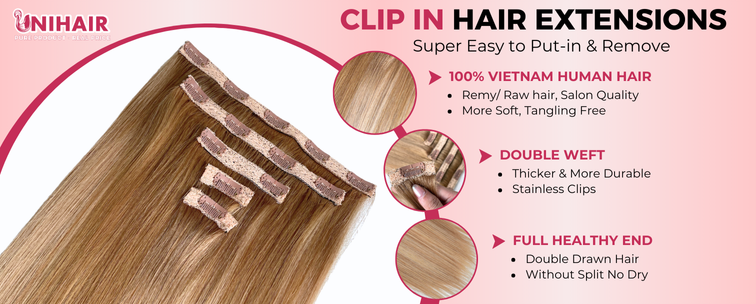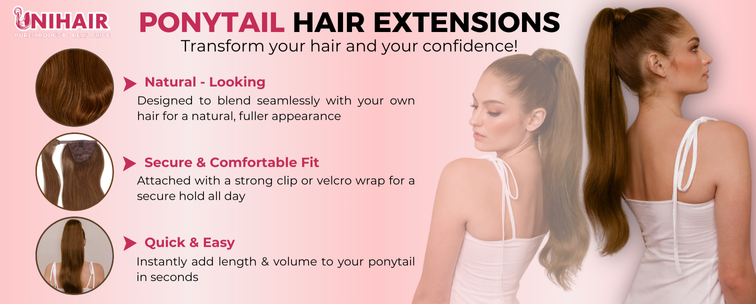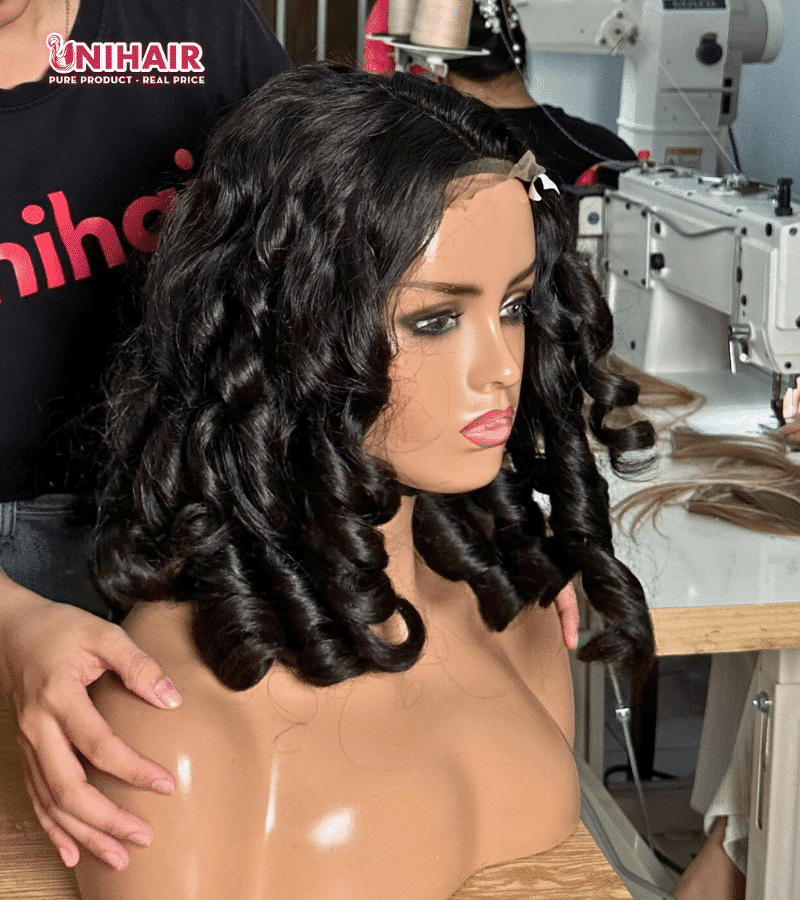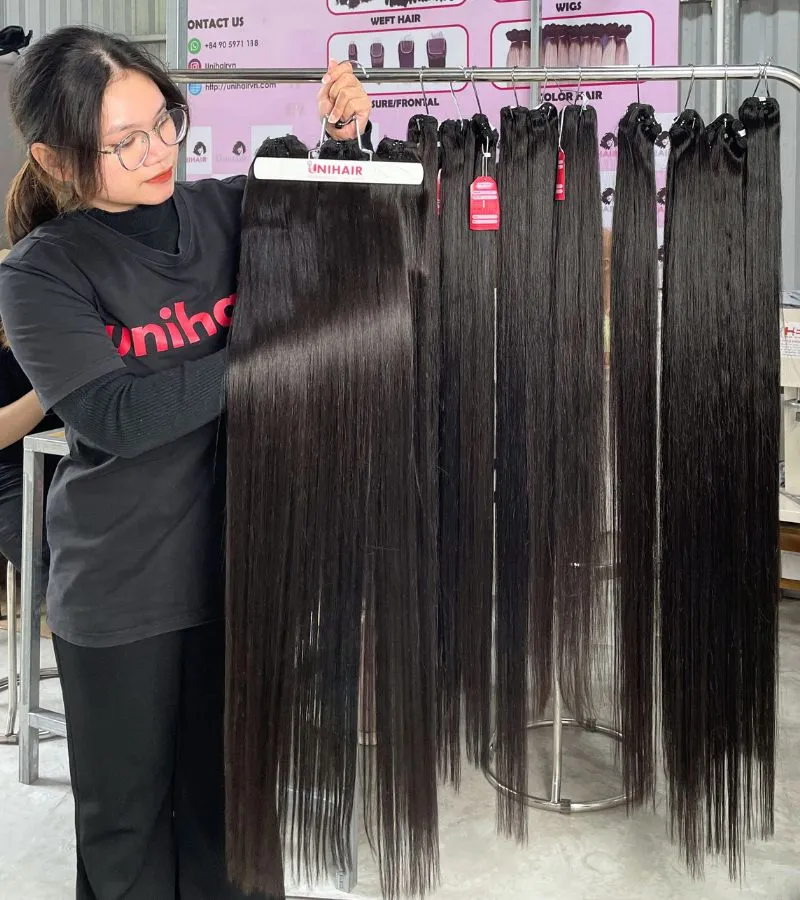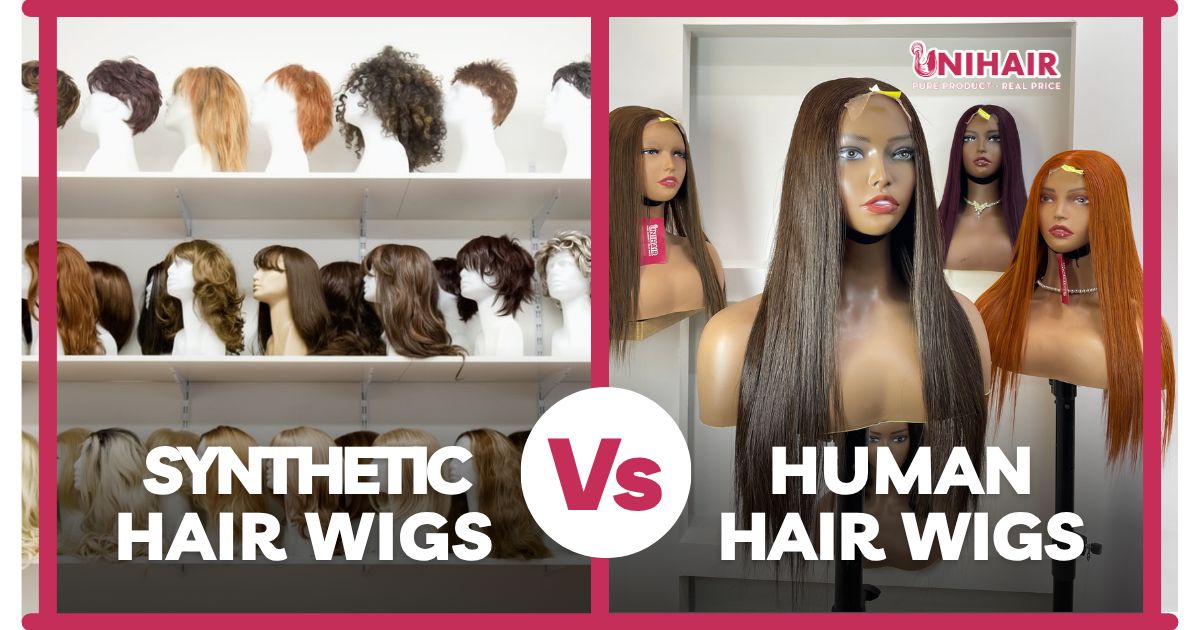Synthetic Vs Human Hair Wigs: Which Is Right for You?
Selecting the right wig can make all the difference, whether you’re experiencing temporary hair loss or simply want to switch up your style. This guide breaks down the key differences between synthetic vs human hair wigs, helping you choose the best option for your needs, preferences, and lifestyle.
What Is a Synthetic Hair Wig?
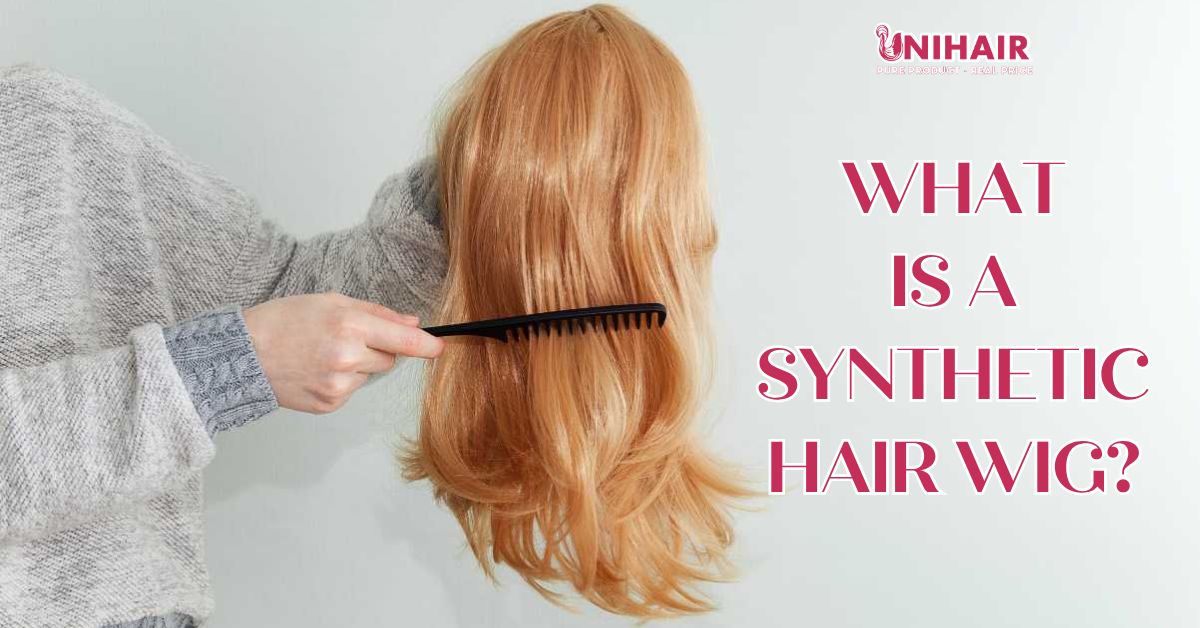
A synthetic wig is crafted from man-made fibers, such as acrylic or nylon, similar to those used in materials like carpet. The fibers undergo chemical treatment to replicate the look and feel of natural hair.
Synthetic wigs come in a wide range of colors and pre-set styles, making them a versatile and convenient option, especially for first-time wig wearers adjusting to the experience.
What Is a Human Hair Wig?
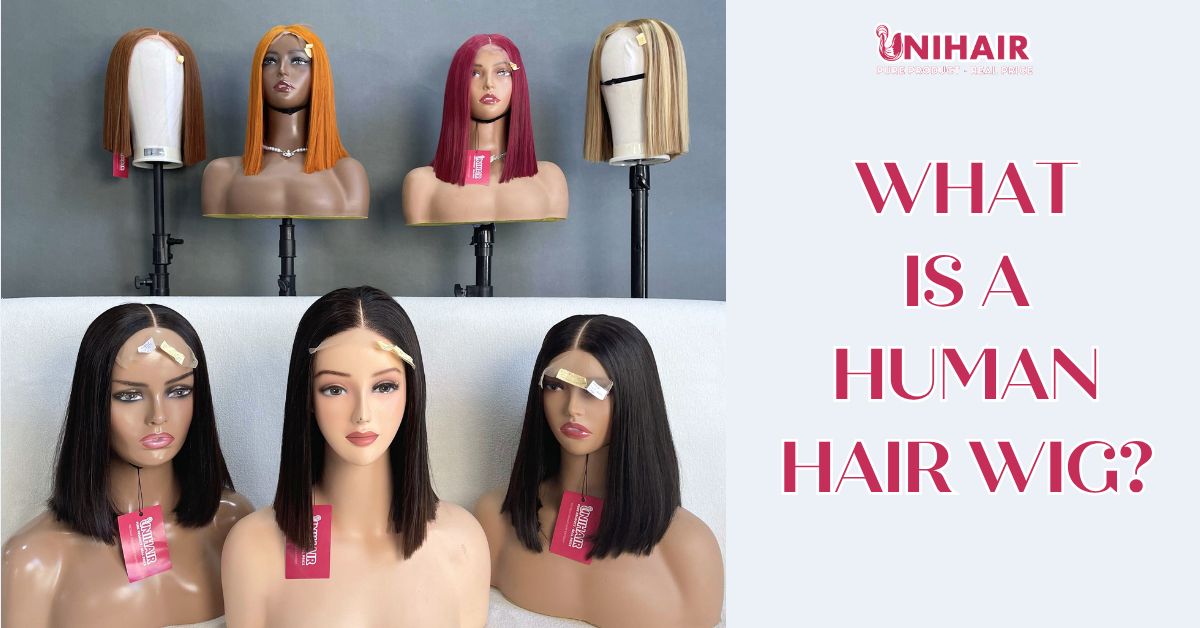
A human hair wig is crafted from real human hair, providing the most natural look, feel, and movement. The hair is soft, shiny, and behaves just like your own, making it nearly impossible to replicate with synthetic alternatives.
The standard for quality human hair is Remy hair. Remy hair is collected in full ponytails, with all cuticles aligned in the same direction before being sewn into the wig cap. This ensures the hair remains smooth, tangle-free, and maintains a healthy, natural look.
In contrast, non-Remy hair is often collected from places like salon floors, with cuticles facing different directions. To mask this, it’s coated in silicone to make it appear smooth, but once washed, the coating wears off, leaving the hair prone to tangling and matting.
How to Differentiate Synthetic Hair from Human Hair
Sometimes, telling the difference between synthetic vs human hair wigs isn’t as simple as touching or looking at it. When visual and tactile cues aren’t enough, there are a few practical tests that can help you identify which type of hair you’re dealing with.
Human hair vs synthetic hair burn test
A popular method for distinguishing the two is the burn test. Snip a small strand of hair and carefully burn it (always in a safe, controlled environment).
Human hair burns slowly, emits a scent similar to burnt protein or feathers and turns to soft ash.
Synthetic hair burns rapidly, gives off a plastic-like odor and forms a hard, melted bead instead of ash.
Water test
Fill a bowl with water and drop a strand of hair into it. Human hair absorbs water and sinks, while synthetic hair floats because of its lightweight and water-resistant fibers.
Heat test
If you have a low-heat curling iron or flat iron, you can gently test how the hair reacts to heat.
Human hair can tolerate low to moderate heat without damage.
Unless synthetic hair is specifically labeled as heat-resistant, it will melt or get damaged quickly.
Consult a professional
If you’re unsure, it’s best to consult a wig specialist or hairstylist. Their knowledge and equipment will assist you in properly identifying the hair type, ensuring you choose the best product for your needs.
By using these methods, you’ll gain the clarity and confidence to choose between synthetic and human hair wigs or extensions.
Synthetic Vs Human Hair Wigs: Pros and Cons
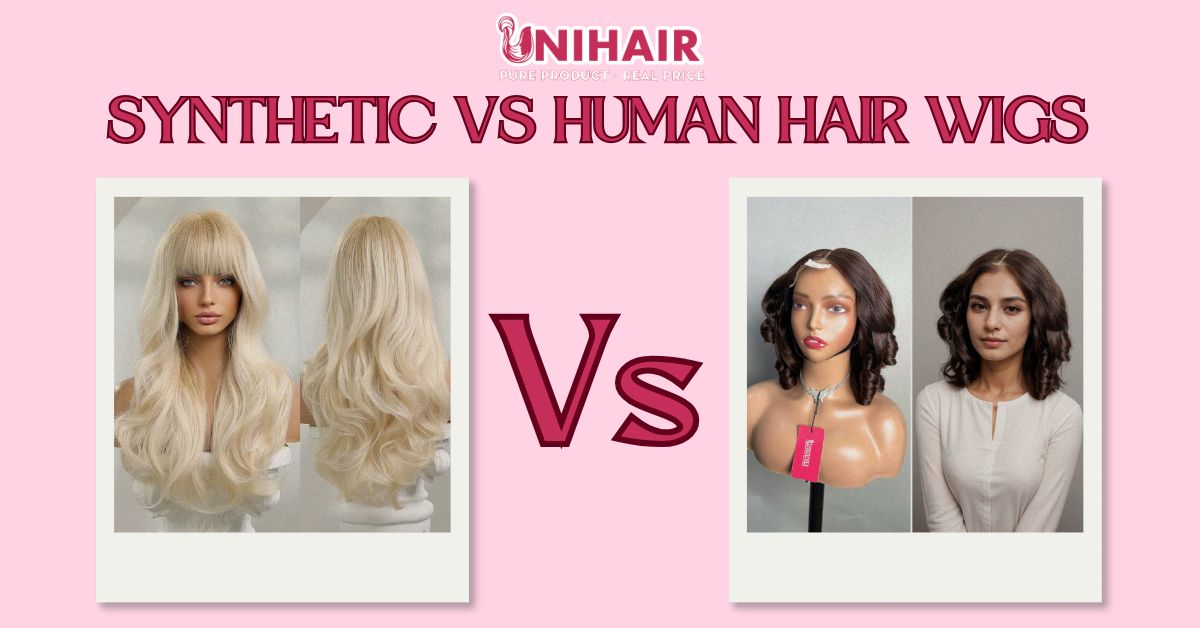
Benefits of synthetic wigs
One of the main benefits of synthetic wigs is their convenience. You can take them straight out of the box and wear them instantly, with no styling required.
They’re ideal for those seeking a low-maintenance option that doesn’t compromise on style. Synthetic wigs hold their shape, come in a variety of pre-styled looks, and require minimal upkeep.
Thanks to the lightweight nature of synthetic fibers, these wigs can achieve fuller, high-volume styles while still feeling light and comfortable on your head.
Synthetic wigs also offer a broader range of vibrant colors than human hair wigs and are less prone to fading or oxidation, meaning the color stays fresh and vibrant longer.
Disadvantages of synthetic hair
Most synthetic wigs aren’t heat-friendly and can be damaged by curling irons, straighteners, or blow dryers. However, certain synthetic wigs are designed to withstand heat. Just be sure to check the label before using any styling tools.
While synthetic wigs offer a variety of ready-to-wear styles, they generally lack the natural movement and softness of human hair. They tend to be stiffer with less bounce and flow.
Another downside is their appearance under bright lighting. Synthetic fibers typically have a glossy appearance which can make the wig look less authentic.
In terms of longevity, synthetic wigs typically last around four to six months with regular wear and proper care.
Benefits of human hair wigs
Investing in a 100% human hair wig means choosing the most natural-looking option available. These wigs closely replicate the look, feel, and movement of real hair, offering a soft, smooth texture that synthetic wigs simply can’t match.
Unlike synthetic wigs, human hair wigs move just like natural hair and lack the stiffness or artificial shine that can make synthetic styles look less realistic.
They look effortlessly natural in sunlight, can be styled and colored just like your own hair, and with proper care, they last much longer than synthetic alternatives.
Disadvantages of human hair wigs
Natural human hair wigs require more care and upkeep than synthetic ones. They need regular washing, gentle styling, and mindful handling to maintain their quality.
Unlike synthetic wigs, they don’t hold preset styles as easily, so certain looks may be harder to achieve with human hair.
If you’re thinking about changing the color or cut, human hair wigs offer less flexibility unless you work with a skilled stylist experienced in customizing wigs.
While you can dye and cut a natural wig, keep in mind that the hair won’t regenerate. Once it’s altered, it’s permanent. Plus, coloring can shorten the wig’s lifespan, as the hair may fade over time.
Lastly, one of the biggest considerations is the cost. Natural wigs come with a higher upfront price tag, making them more of a long-term investment.
Difference Between Synthetic Vs Human Hair Wigs
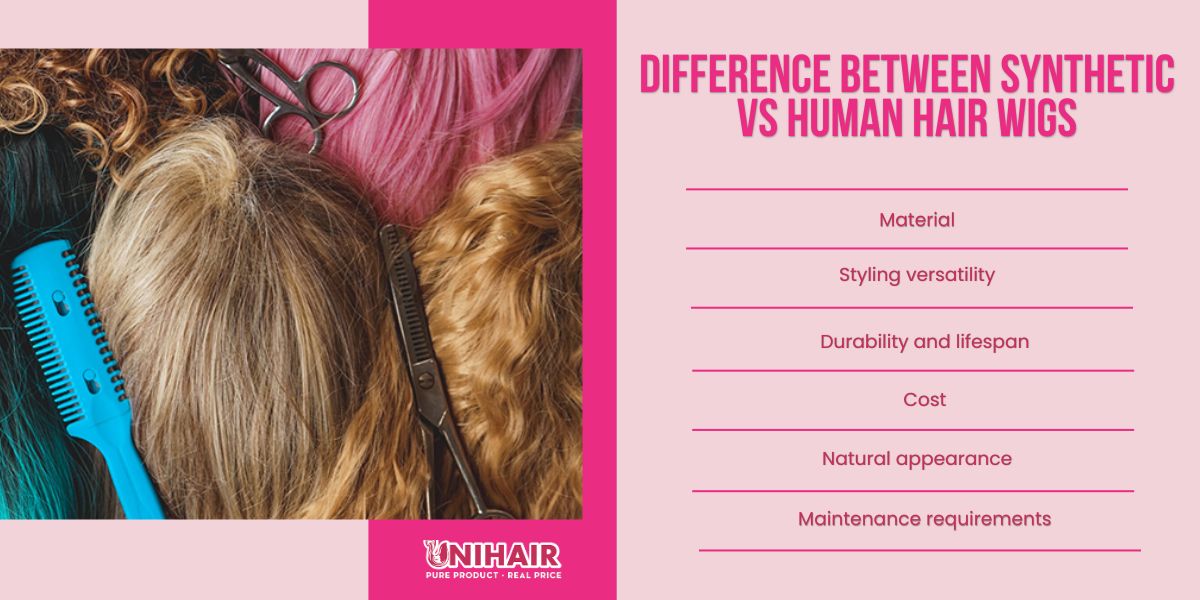
Material Synthetic Vs Human Hair Wigs
The most noticeable difference between synthetic vs human hair wigs lies in their composition. Synthetic wigs are made from man-made fibers, often heat-resistant, and have come a long way in terms of quality. However, they don’t fully capture the softness and natural flow of real hair.
In contrast, human hair wigs are crafted from authentic human hair, offering a realistic appearance and texture that mirrors the shine and movement of natural hair.
Styling versatility
Synthetic wigs usually come in pre-set styles and are heat-sensitive. Most can’t be restyled with hot tools unless they’re specifically labeled as heat-resistant.
While this can be a drawback for those who love to switch up their look, it’s actually a plus for anyone who prefers a ready-to-wear wig with minimal effort. Just pop it on and go.
Human hair wigs offer far greater versatility. You can curl, straighten, blow-dry, and even color them, just like your own hair. This makes them a great option if you want the freedom to change up your style regularly.
Durability and lifespan
Human hair wigs have a longer lifespan compared to synthetic wigs. With proper care, a high-quality human hair wig can last several years. Often, the wig cap will wear out before the hair itself.
Synthetic wigs generally have a shorter lifespan, typically lasting anywhere from a few months up to a year, depending on how often they’re worn and how well they’re maintained. Over time, synthetic fibers can tangle, frizz, and lose their original style.
Synthetic vs human hair wigs cost
Synthetic wigs are budget-friendly, making them a great choice for those seeking an affordable or temporary hair solution. Many people opt to buy multiple synthetic wigs throughout the year instead of investing in a single, pricier human hair wig.
Human hair wigs are more expensive, with prices varying based on factors such as the hair’s source, length, and quality. Though they’re more expensive upfront, their durability and realistic appearance often make them worth the investment for long-term wearers.
Natural appearance – Synthetic vs human hair wigs
Human hair wigs are regarded as the top choice for a natural look. The texture, shine, and natural movement make them nearly indistinguishable from real hair, especially at the high end of the quality spectrum.
That said, synthetic wigs have improved significantly. While they may still lack the same depth and realism as human hair, particularly under close scrutiny, a high-quality synthetic wig can still look very convincing.
Maintenance requirements
Both types of wigs need proper care, but the level of maintenance differs. Human hair wigs need maintenance similar to natural hair, including regular washing, conditioning, and styling. They need a bit more effort to keep them looking their best.
Synthetic wigs, on the other hand, are much lower maintenance. They retain their style even after washing and don’t require daily styling. However, they’re more prone to damage from heat and improper care, so gentle handling is still important.
Synthetic Vs Human Hair Wigs: What Is the Best Choice?
Choosing between synthetic vs human hair wigs ultimately depends on your personal style, budget, and how much time you want to spend on maintenance.
Human hair wigs offer unmatched realism and styling flexibility but come with a higher cost and require more care. Synthetic wigs, on the other hand, are more budget-friendly and low maintenance, though they may not offer the same natural look or styling range.
No matter which type you choose, both can empower you to express your individuality and elevate your look with confidence.
At Unihairvn, we’re committed to helping you find the perfect wig that complements your beauty and lifestyle. Our curated selection of premium synthetic and human hair wigs gives you plenty of options to suit your needs.
Get in touch with us today to explore our collection and start your journey to a more confident, stylish you!

